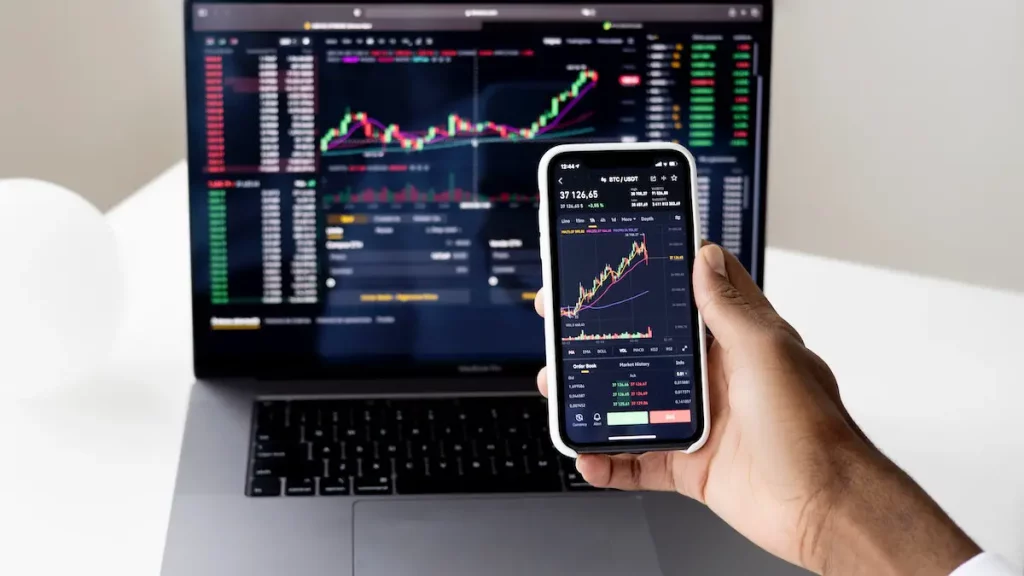Introduction: The Art of Timing in Trading
In trading, timing is everything. Markets are constantly in motion, with prices fluctuating based on a myriad of factors, from economic data releases to geopolitical events. For many traders, catching the next breakout — that moment when a stock or asset surges to new heights — is the holy grail. However, identifying which asset is ready to break out can be as elusive as catching lightning in a bottle.
Enter the concept of multi-factor resonance, a strategy that integrates multiple indicators and data points to predict when a breakout is imminent. The idea is simple yet powerful: by analyzing different market factors that are all pointing to the same conclusion, you can create a “resonance” of confirmation that the breakout is not just probable but highly likely.
In this article, we’ll break down how to use multi-factor resonance as part of your 72-hour trading plan. This approach allows you to identify and act on high-probability breakout stocks or assets in a very short time frame — within the next 72 hours.
I. What is Multi-Factor Resonance?
Multi-factor resonance is the intersection of several technical and fundamental indicators, creating a confluence of signals that strongly suggest a breakout is on the horizon. It’s a method of cross-validation, where different types of data and signals — such as price action, volume, momentum, market sentiment, and volatility — all point to the same outcome. In other words, it’s like having multiple experts in the field agree on the same analysis, making the probability of a successful trade significantly higher.
This method works on the assumption that no single indicator is foolproof. Each indicator has its strengths and weaknesses, and while they can be incredibly powerful on their own, their predictive power increases exponentially when they align. By combining multiple signals, you essentially create a “feedback loop,” or resonance, which amplifies the accuracy of the trade signal.
II. Building Your 72-Hour Trading Strategy: The Core Components
The core of the 72-hour trading script revolves around using multi-factor resonance to identify stocks that are primed for a breakout. Here’s a breakdown of the factors to consider within your 72-hour window:
1. Price Action and Technical Analysis
Price action is the foundation of most trading strategies. By closely monitoring price movement, you can identify patterns, levels, and trends that reveal the underlying market sentiment.
- Key Patterns to Look For:
- Triangles and Pennants: These consolidation patterns often precede a breakout. They indicate that the market is coiling, and once the price breaks out of the pattern, it tends to move quickly.
- Breakouts from Support/Resistance: A price that breaks through established support or resistance levels with high volume is often the precursor to a significant move in the direction of the breakout.
- Cup and Handle: This bullish pattern is a powerful indicator of a potential breakout once the price breaks the handle resistance.
- Volume Analysis: Volume is the key to confirming a breakout. If a stock breaks a key level but does not do so with a surge in volume, the breakout may be a false signal. High volume at a breakout level suggests institutional participation and can often indicate that a breakout is legitimate.
2. Momentum Indicators
Momentum is a crucial factor when it comes to identifying breakouts. If a stock is showing increasing momentum, it’s often a sign that buyers (or sellers) are in control and the trend is likely to continue. The best momentum indicators to use are those that help you gauge the speed of price movements, such as:
- Relative Strength Index (RSI): RSI is a popular momentum indicator that measures the speed and change of price movements. An RSI value above 70 suggests that a stock is overbought, while an RSI below 30 indicates oversold conditions. However, a RSI divergence (where the price moves in one direction and the RSI moves in the opposite direction) can signal that the current trend is weakening and a breakout may follow.
- Moving Average Convergence Divergence (MACD): The MACD is a trend-following momentum indicator that helps traders identify potential reversals or breakout points. When the MACD line crosses above the signal line, it can indicate a bullish momentum shift, often signaling a potential breakout.
- Stochastic Oscillator: Similar to the RSI, the stochastic oscillator measures momentum, but it also compares the current closing price to the price range over a specific period. When the %K line crosses above the %D line, it’s a strong indication that upward momentum is increasing.
3. Volatility and Risk Indicators
Volatility is another key component in predicting breakouts. Breakouts often occur when a stock or asset experiences a volatility expansion, either because of a new catalyst (earnings, news, etc.) or market conditions.
- Bollinger Bands: These are a volatility indicator that shows the standard deviation around a moving average. A Bollinger Band squeeze, where the bands narrow, suggests a period of low volatility. A breakout often follows once the price moves outside of the bands, signaling that volatility is picking up.
- Average True Range (ATR): The ATR is a measure of volatility that helps traders identify how much a stock moves on average during a specific period. A rising ATR signals increasing volatility, which is a key characteristic of a potential breakout.
4. Sentiment and Market News
While technical analysis is vital, market sentiment is often the catalyst for a breakout. In a short-term trading strategy, external factors like news, earnings reports, economic data, and sector performance can heavily influence price movements.
- Sentiment Indicators: Tools like the Put/Call ratio, VIX (Volatility Index), or bullish/bearish sentiment surveys can help you gauge overall market sentiment. Positive sentiment, especially in sectors like tech or biotech, can drive a stock’s price higher, increasing the likelihood of a breakout.
- News Catalysts: Monitor earnings reports, product launches, regulatory approvals, or any major events that could potentially trigger a large price move. Often, earnings surprises or unexpected news developments can lead to massive breakouts.
5. Options Market Activity
The options market provides valuable clues to identifying upcoming breakouts. By monitoring changes in open interest and implied volatility of options, traders can get a sense of which stocks are expected to make a big move. Here’s how to leverage options data:
- Open Interest: A large concentration of call options near a particular strike price could indicate an expected breakout level. Look for stocks with rising open interest in out-of-the-money calls as they approach key technical levels.
- Implied Volatility (IV): A significant increase in IV can be a sign that traders are anticipating a large price move, potentially signaling an upcoming breakout. IV often increases ahead of key events, so watch for stocks where implied volatility is rising.

III. How to Implement Your 72-Hour Trading Plan
Now that we have identified the key factors to use in multi-factor resonance, the next step is applying them within a 72-hour window. The objective is to use these indicators to make fast decisions that allow you to capture breakouts before they become widely apparent.
1. Step 1: Set Up Your Screener
Use a combination of technical and sentiment filters to create a list of potential breakout candidates. For example:
- Technical Filters: Look for stocks with a recent breakout from a pattern like a triangle or pennant. Ensure that the stock has a rising MACD and bullish RSI. Also, make sure volume is increasing as the stock approaches key resistance.
- Sentiment Filters: Focus on stocks with high open interest in calls and rising implied volatility, especially those with a recent catalyst like earnings or news.
2. Step 2: Analyze Key Levels and Catalysts
Once you’ve identified potential candidates, focus on key price levels. These are the points where the stock has the highest chance of breaking out. Set alerts for these levels and prepare to act when the stock reaches them.
- For example, a stock trading at $100 with high open interest in call options at $110 would warrant immediate attention as it approaches $110.
3. Step 3: Execute Your Trade
When the stock approaches the breakout level, ensure that it meets the criteria for multi-factor resonance. Confirm the breakout by checking for:
- Volume confirmation: Ensure the breakout is accompanied by a surge in volume.
- Momentum: Check the MACD, RSI, and Stochastic for confirming bullish momentum.
- Volatility expansion: Ensure the stock is moving outside the Bollinger Bands or experiencing an uptick in ATR.
Once confirmed, execute your trade, setting your stop-loss just below the breakout level and your target based on projected price action.
4. Step 4: Monitor and Exit
Monitor the stock closely. If it moves in your favor, consider scaling into the position or adjusting your stop-loss to lock in profits. If the price reverses before hitting your target, be prepared to exit with a small loss.
IV. Conclusion: The Power of Multi-Factor Resonance
Multi-factor resonance is a powerful approach that allows you to combine technical analysis, momentum, volatility, market sentiment, and options data into a comprehensive strategy for identifying high-probability breakouts. By focusing on the right indicators and applying them within a tight 72-hour window, you can improve your chances of capturing the next breakout leader.
Whether you’re a short-term trader or someone looking for quick profit opportunities, the combination of multiple confirming signals gives you the edge you need to make timely and informed decisions. The 72-hour trading script is a time-sensitive, high-reward strategy, but it requires precision, preparation, and discipline to execute successfully.














































